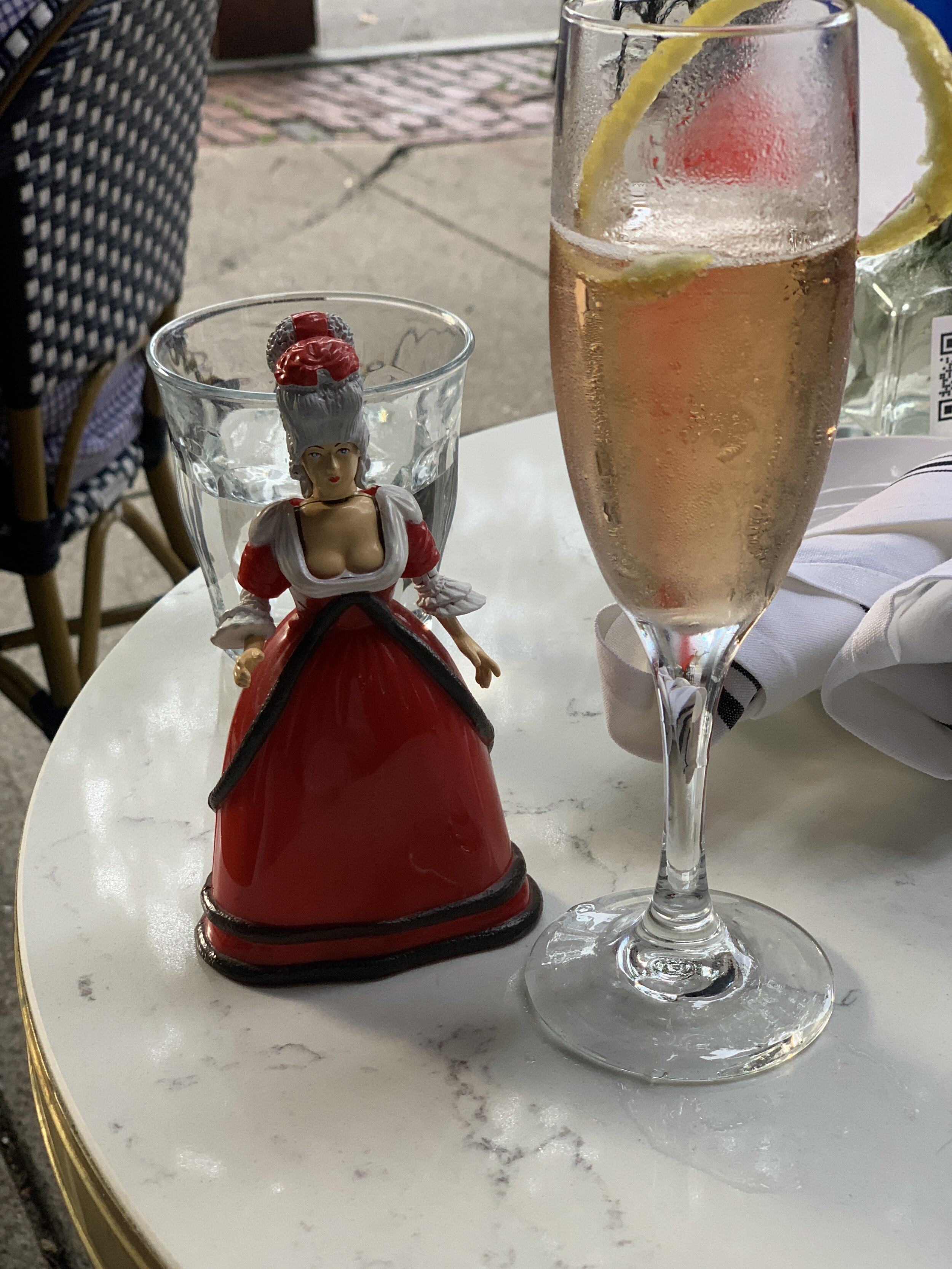Etiquetteer loves to hear from readers, and one just shared a backlog of reactions to earlier columns this year.
On the Victorian use of silver, referred to in Etiquetteer’s column on National Simplicity Day: “It is, indeed, true, that ‘The Victorians came up with rules and regulations about everything in order to keep upstarts and parvenus in their proper places.’ However, the multiplication of serving items (and place items) does make sense. Specialization allowed the transfer [of food] from serving dish to plate, and from plate to mouth, in a more secure fashion. From reading later Victorian etiquette manuals I do see an emphasis on cleanliness and making sure that each guest has access to the most pristine dishes. I have not done the required work to see how this dovetails with medical theories of disease, but I suspect that two are not unrelated.”
Etiquetteer responds: Not only that, the discovery of the Comstock Lode in 1859 flooded the market with silver, making it more affordable. With new refrigerator cars riding America’s rails regularly after the Civil War, a greater variety of foods was also available, fueling a vogue for special silver. But we no longer have a need for terrapin forks or strawberry forks. Like every fashion, its bubble grew and grew . . . and burst.
The emphasis on cleanliness you refer to may be attributed in large part to Ellen Swallow Richards, generally acknowledged to be the founder of home economics in the United States, and the first woman admitted to the Massachusetts Institute of Technology.
On Proper Dress from the Perfect Propriety of the Future: “Yes, I think that Americans are so lazy that they will take the devolution of their (home)work attire as license to ‘devolve’ their public attire as well. Then again, it might be difficult for it to devolve much further than it already has. Just recently The New York Times wrote that ‘When U.S. clothing sales plummeted 79 percent in April — the largest dive on record — purchases of sweatpants shot up 80 percent.’ This does not bode well.
“I notice that even I have become less formal in my online attire. Then again, when the un-air-conditioned house is at 95 degrees, I'm not certain that I'm prepared to go more formal than a clean, black, well-fitting, and completely unfrayed tee-shirt with a respectable collar.
“I try to keep my camera off. Then again, I have several inches of ponytail*, while the sides are not quite long enough to tie back (no haircut since Thanksgiving), so I am keeping my camera off until I can either go full Lucius Malfoy or complete Londo Mollari. It would be nice if the reaction to having to dress so little for (home)work resulted in better dressing on those occasions when one is in public, but I would not hold my breath.”
Etiquetteer responds: Less rigid formality is not necessarily a bad thing; as noted before, it’s better to be underdressed than overdressed, and no one runs around at home in a suit and tie anyway. But a professional standard is being maintained. Just recently Etiquetteer saw two men friends post on social media that they’d gone back to wearing neckties to work from home in order to make video presentations.
Speculation about “mullet attire” - “business on top, party on the bottom” - is best not indulged in. While Etiquetteer shares your “concern” about the ubiquity of sweatpants, Etiquetteer himself isn’t ordering a new suit for the fall, but indulging in a couple pairs of kajuaru to wear out of camera range.
Many professional men are having to make decisions about their hair. Does one risk visiting a barber during the Time of the Coronavirus, or experiment with a home haircut, or just grow it out? Etiquetteer falls into the latter category, and is quickly morphing into both his own grandmother** and Young Jimmy Buffett. Rather than keep your camera off (which many colleagues may find stand-offish), Etiquetteer would suggest you find a hair gel or other product to style those tendrils back.
Dear Etiquetteer:
And now to the point that I was going to write about before I was distracted by your back issues.
I found (and subsequently lost) a news story that claimed that studies have now shown that people are now spending more time in videoconferences than they ever spent in meetings. Pre-corona, I had two one-hour meetings, one telecon, and two informal office coffees per week. Now, between Skype, Teams, Zoom, Webex, and BlueJeans, I have ten video meetings per week. And thus I have much less time to get things done! My university has declared every other Friday to be a meeting-free day within the university. This does not apply to outside meetings, but it does help some of the faculty reclaim their missing time.
Dear Professor:
Perhaps these extra meetings are taking the place of a drastically shortened commute? Etiquetteer allegedly has ten more hours a week now that no commuting is involved. It is entirely possible that some of these meetings are born from a need to counter feelings of isolation. That said, too much of a good thing can be more than enough***. Start establishing your own meeting-free times in addition to your meeting-free Friday, and defend that time for your own productivity. You need offer nothing more specific than “I’m sorry, I have another commitment then.”
Readers, how are you managing your professional work load during this challenging period? Please let Etiquetteer know how you’re doing!
*The writer is a gentleman making what may be a first foray into longer hair.
**Scroll through Etiquetteer’s Instagram feed to see comparative photos!
***Unless you’re Mae West, of course.
































